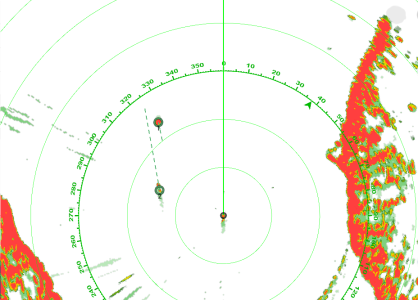I think the ARPA performance is one of the strongest features of the Furuno radars, especially compared to radar from other manufacturers. With an SCX-20, the ARPA is very accurate and provides a clear indication of the risk posed by other vessels. Its accuracy can be confirmed by comparing the ARPA target characteristics with the information received from a vessel with Class A AIS transponder, which transmits GPS derived course and speed every two seconds for a vessel moving over 14 kts. The ARPA calculated course and speed are very close to the AIS data.
I had the top of the line 25kW six foot open array radar from another manufacturer that should remain nameless for a couple of years. Its equivalent of ARPA required manual target acquisition and took a long time to generate course and speed vectors. Even worse, as the target moved, the vector would change dramatically as it was recalculated. I had to rely entirely on target trails to assess course and speed for boats without AIS. It was a great relief to go back to a Furuno radar, which I had had previously.




